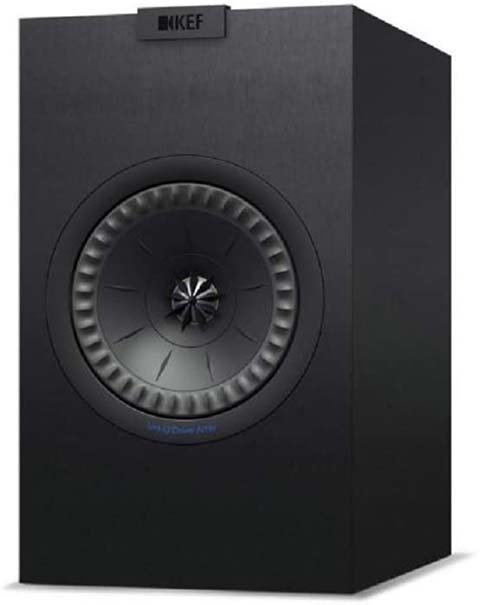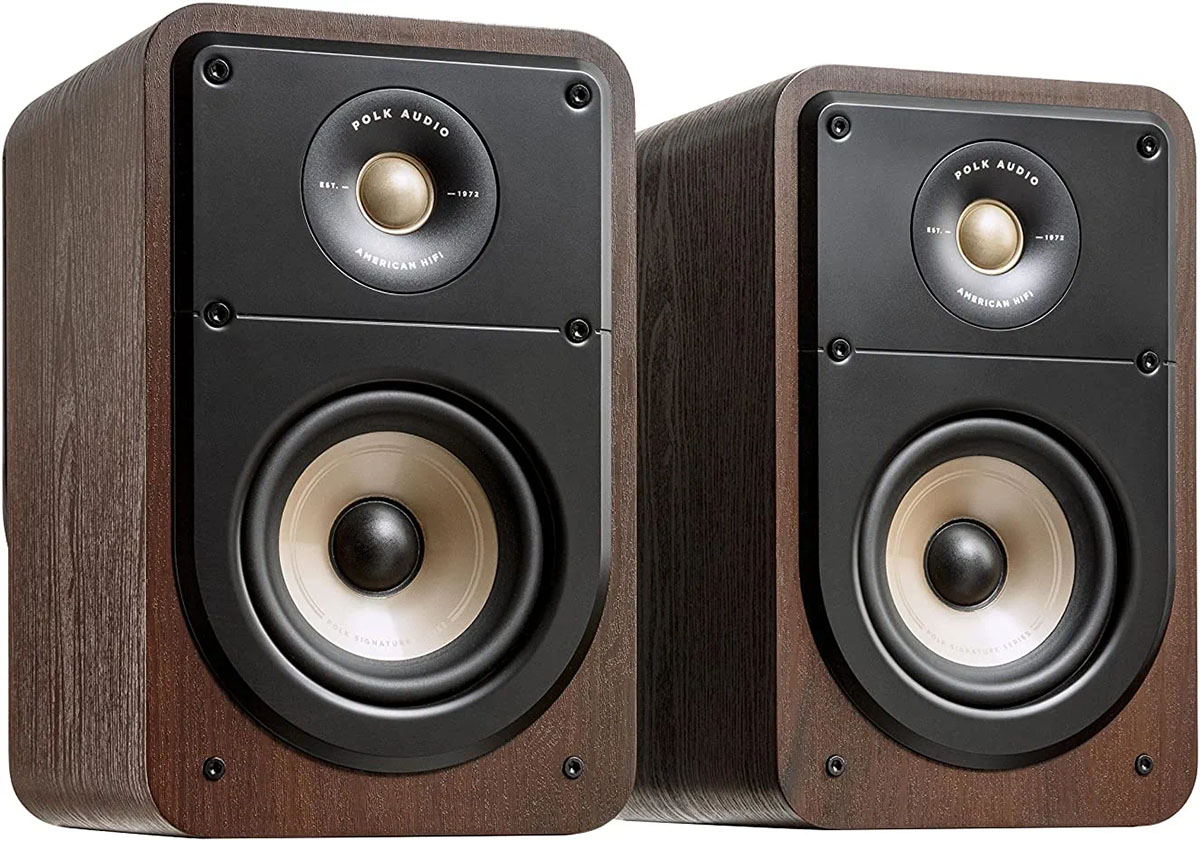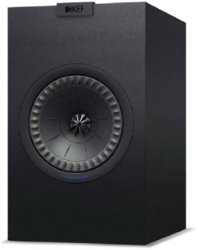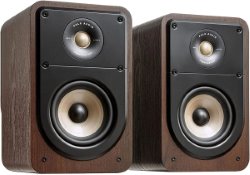KEF Q150 vs. Polk Signature Elite ES15

| KEF Q150 Bookshelf Speakers | Polk Audio Signature Elite ES15 Bookshelf Speakers |
| MSRP | |
| $600 | $300 |
| Dimensions (H × W × D) | |
|
11.92” × 7.08” × 10.94” 303mm × 180mm × 278mm |
12.00” × 7.50” × 10.20” 305mm × 190mm × 259mm |
| Power Type | |
| Passive | Passive |
| Frequency Response | |
| 51-28,000 Hz | 48-40,000 Hz |
| ASR Score | |
| 4.8 | n/a |
| ASR Score w/Subwoofer | |
| 6.9 | n/a |
|
Amazon.com
|
Amazon.com
|
Key Takeaways
TLDR Summary: In the realm of accessible high-fidelity sound, the KEF Q150 and Polk Audio Signature Elite ES15 bookshelf speakers offer enticing audio delights. The Q150s, with their unique Uni-Q driver array, deliver precise, room-filling sound that belies their compact stature. KEF’s design promotes a seamless soundstage, making them a darling among detail-focused listeners. In contrast, Polk's ES15 speakers bring forth the brand's rich American sound with their Dynamic Balance acoustic array; they offer a robust, warm presence, paired with a slightly more pronounced bass response. Both sets promise engaging performance, but the KEF excels in audio clarity, while Polk offers an enveloping warmth.
Speaker Comparison
When considering the vast landscape of bookshelf speakers that could grace our living spaces, the KEF Q150 and Polk Audio Signature Elite ES15 stand out for their own merits. These two speakers reflect the brands' commitment to combining aesthetic finesse with acoustic precision. That being said, the approach each manufacturer takes in reaching the audiophile's heart is as distinct as the sound waves they produce, offering a fascinating contrast for those in the market for an audio upgrade.
The Philosophy of Sound
KEF's Q150 embraces a driver design that is almost a work of art, centered around their Uni-Q driver array, which positions the tweeter concentrically within the midrange speaker, aiming for a more accurate three-dimensional soundscape. This point-source configuration is emblematic of KEF's quest for a more immersive listening experience. Polk Audio's Signature Elite ES15, on the other hand, opts for a more traditional driver setup, with a focus on their proprietary Dynamic Balance technology designed to produce wide, balanced, and precise sound. Each company's unique acoustic philosophy is evident in the respective performance of their speakers.

 (at Amazon.com)
(at Amazon.com)Design Aesthetics
The KEF Q150 sports a minimalist and modern design, boasting a sleek matte finish and clean lines that speak to the contemporary listener. Its compactness allows it to seamlessly blend into an array of home environments without demanding visual attention. In contrast, the Polk Audio Signature Elite ES15 features a more classic American design, with a larger cabinet and a visually striking wood grain texture. The ES15 desires a presence in the room, not just to be heard, but seen as a statement piece of the home entertainment system.
Acoustic Performance
When it comes to performance, the KEF Q150 delivers a pristine and detailed sound signature that aligns with the expectations of purists. The Uni-Q driver yields a focused and precise soundstage, allowing listeners to pinpoint individual instruments within a track. The bass response, while not overwhelming, is tight and controlled, suitable for those who value accuracy over raw power. The Polk Audio Signature Elite ES15, in contrast, has a warmer and more robust sound profile. The speakers bring forth a more pronounced bass presence that may appeal to enthusiasts looking to feel the rhythm as much as they hear it. This makes the ES15 particularly suited for genres that thrive on a powerful low-end.

 (at Amazon.com)
(at Amazon.com)When discussing the high frequencies, the Q150's Uni-Q tweeter provides a sparkling performance that manages sibilance and harshness commendably. Its ability to deliver extended highs without fatiguing the ears is a testament to KEF's engineering. The ES15's terylene dome tweeter is no slouch either, offering a smooth and refined treble response that complements the overall warmth of the speaker. Both models handle the highs with aplomb, but the Q150 edges forward in terms of transparency and detail retrieval.
Compare to similar speakers
The midrange is where many listeners find the soul of the music, and both KEF and Polk have taken great care to ensure theirs sing. The KEF Q150's midrange is articulate and uncolored, presenting vocals and acoustic instruments with an unblemished clarity. Polk's ES15, while still clear, adds a touch of richness to the mids, giving them a slightly more lush character. This slight coloration is often a welcome trait in bookshelf speakers that aim to deliver an engaging and musical performance.
In the final analysis, the choice between the KEF Q150 and Polk Audio Signature Elite ES15 may boil down to a matter of taste and application. The Q150 is a stunning proposition for the detail-oriented listener who seeks an intimate connection with the music, favoring nuance over visceral impact. The ES15 will appeal to those who crave a full-bodied sound with ample room-filling capability, making it an ideal companion for a variety of multimedia applications. Both sets of speakers represent their brand's vision with integrity, and either choice would undoubtedly elevate the home listening experience to gratifying new heights.
- KEF Q150 reviews and FAQs
- Polk Signature Elite ES15 reviews and FAQs
Check Current Prices: |
|
|
Amazon.com
|
Amazon.com
|
Affiliate Disclosure: As an Amazon Associate, we earn from qualifying purchases.

